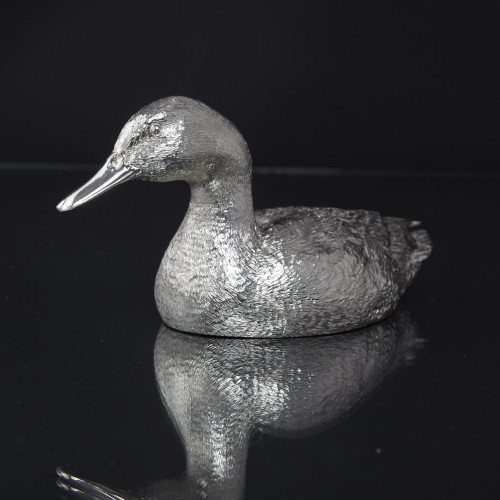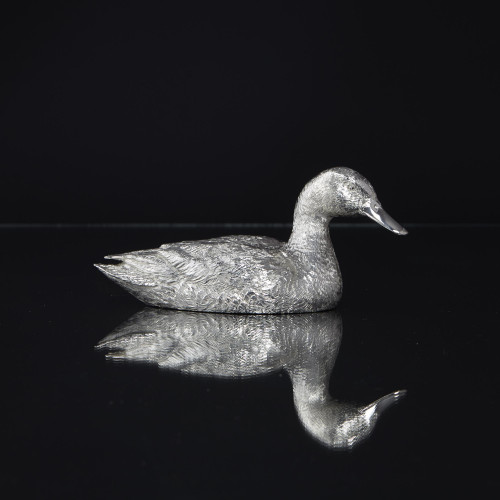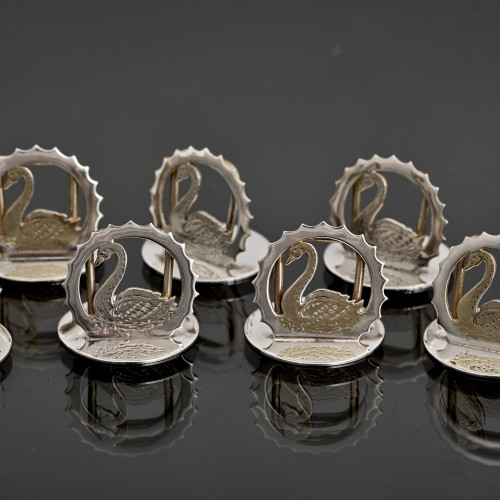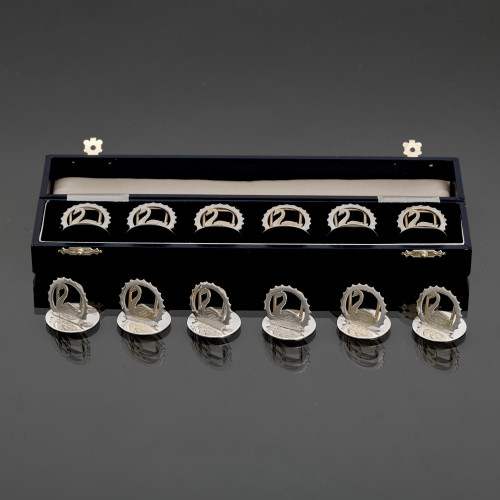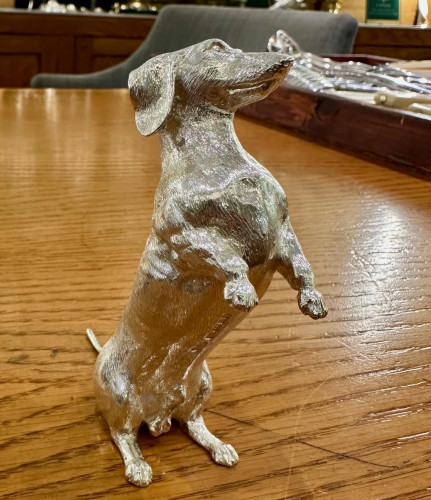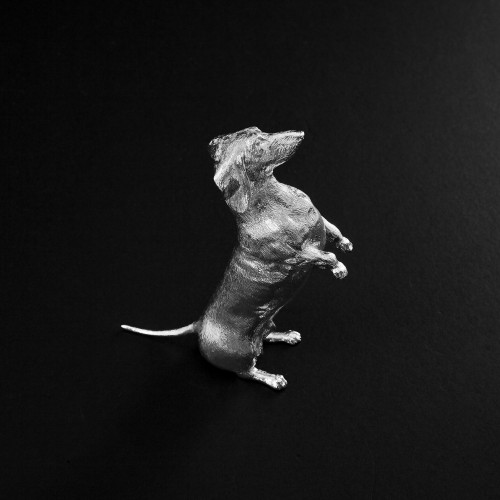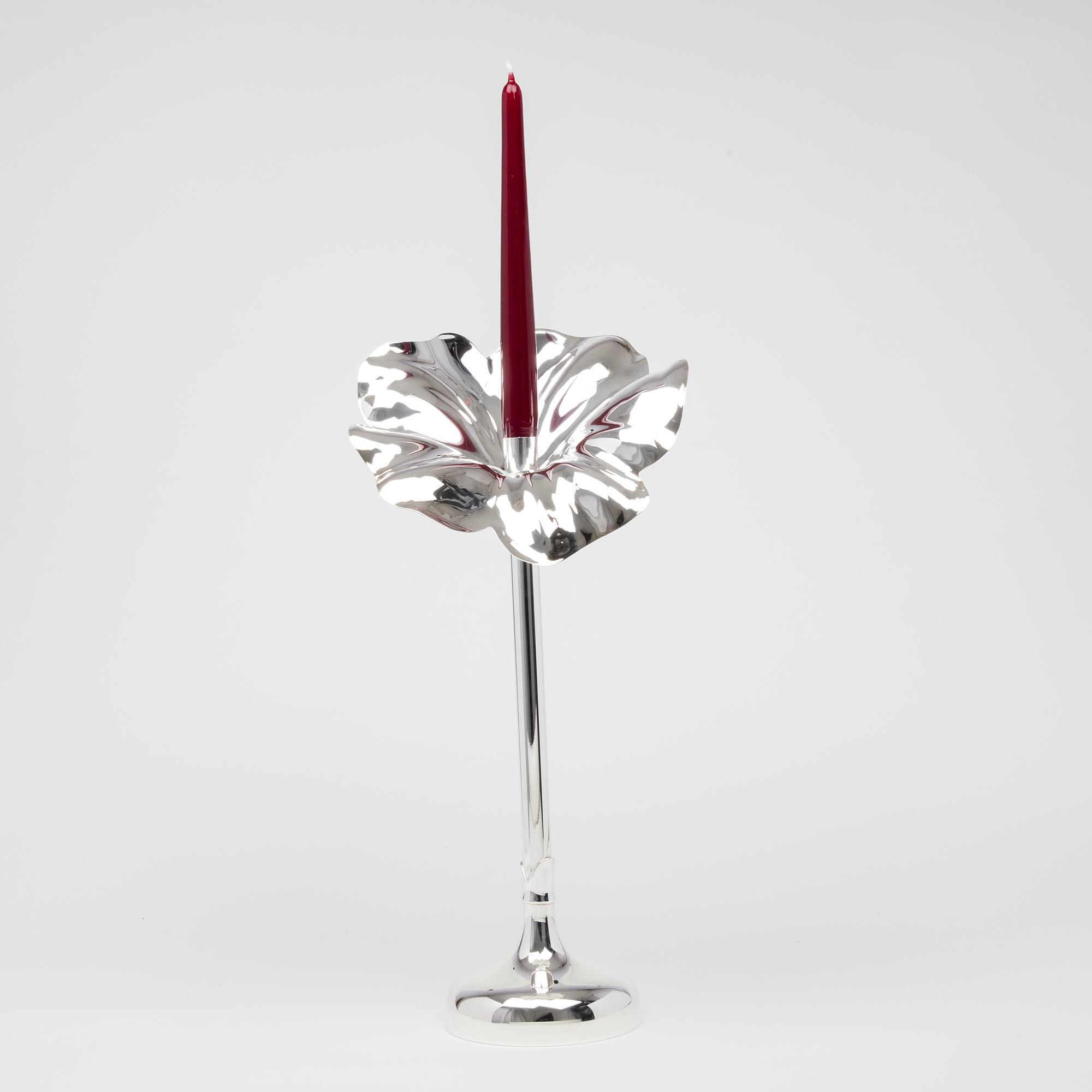- Home
- Dining & Serving
- Underplates & dinner plates
- Silver overlay trivets with fishing scene
Silver overlay trivets with fishing scene
Silver overlay trivets with fishing scene
2126
Fantastic, pierced silver overlay glass trivets, each depicting a hand-engraved landscape fishing scene with a fisherman and his line and the whole vista enclosed within a border of alternating fish and pond weed.
In 1889, the decorative technique of applying sterling silver designs to glass was patented by Oscar Pierre Erand and John Benjamin Round for Stevens & Williams Ltd in Birmingham and silver overlay found its first wave of popularity in the early 1900s. Sterling silver was applied to glass by a chemical method so that a cut-out design of silver metal appears against a clear or coloured glass background. Where the silver was thick enough a silversmith might further embellish the piece with hand engraving.
During this initial vogue, this very labour-intensive production technique meant high retail costs, but despite this from 1895 to the early 1920s the art of silver overlay had a fervent following and became a decorative rage. The silver designers would apply patterns that complemented the piece, for instance swirling Art Nouveau flowers applied to a perfume bottle, a waterscape of bulrushes might decorate a water jug, or a wine jug could feature intertwining grapevines.
The fashion had declined by the mid-1930s but with the development of a more economical process, its revival followed immediately after WWII and lasted until the late 1950s.
Priced singly; four available.
Dimensions:
1933 & 1934
Birmingham
Excellent
Thank you for your enquiry.
We will get back to you soon.
Please create wishlist to add this item to
YOU MIGHT ALSO LIKE





